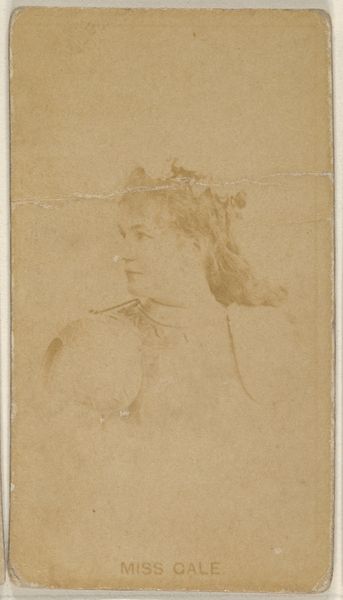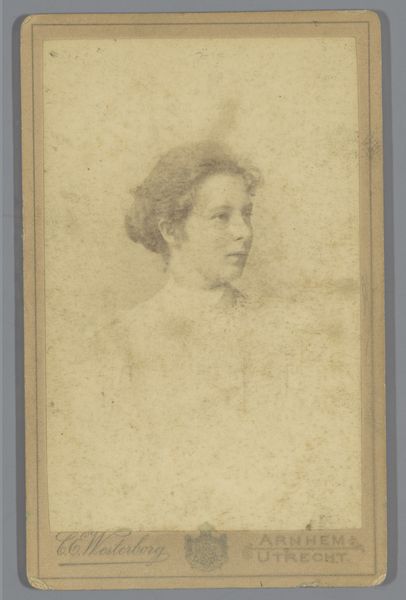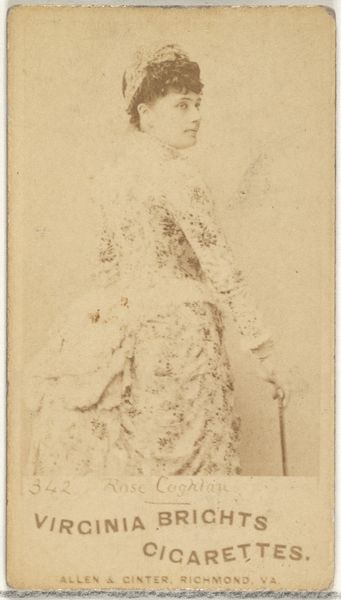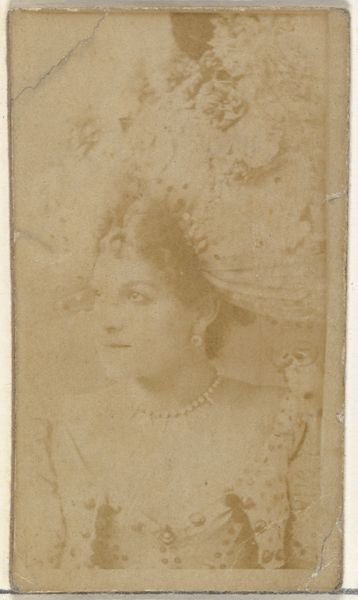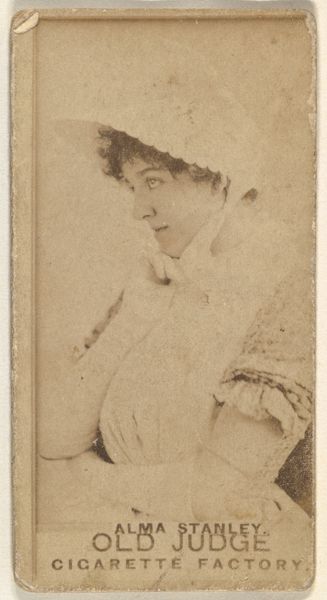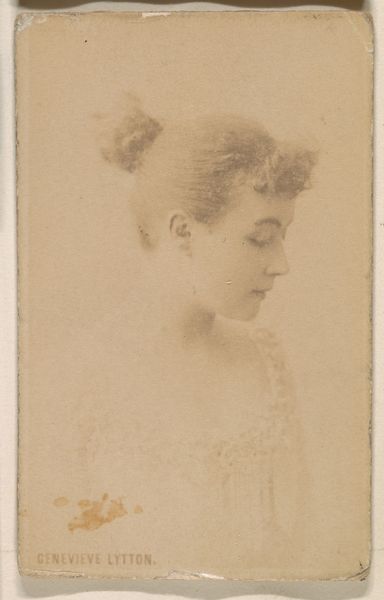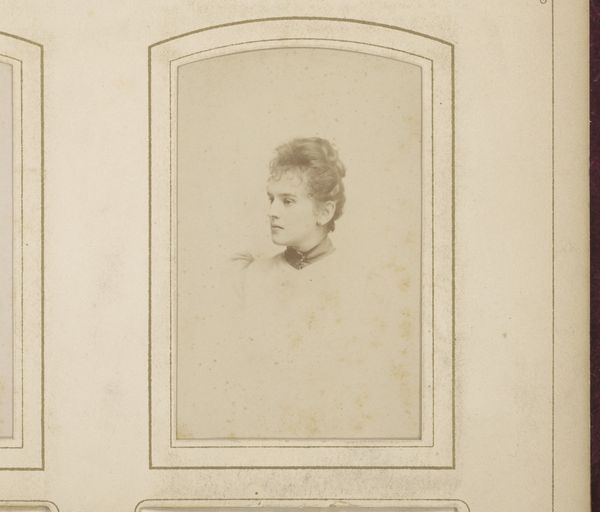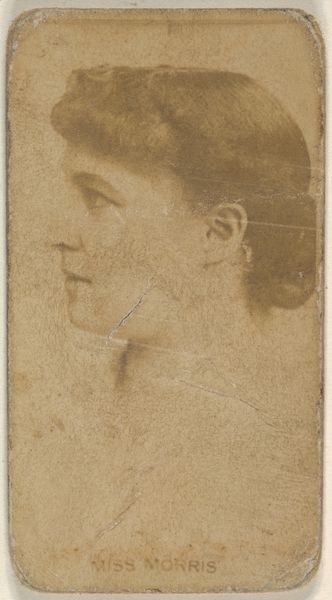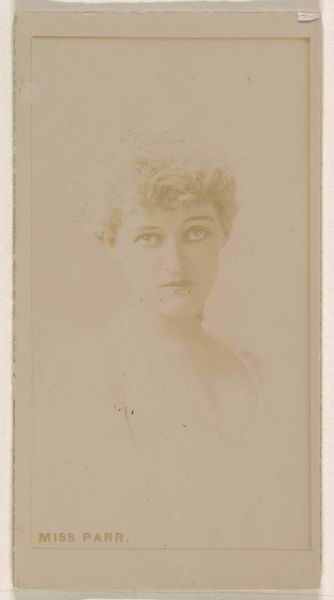
Mlle. Mante, from the Actors and Actresses series (N45, Type 8) for Virginia Brights Cigarettes 1885 - 1891
0:00
0:00
drawing, print, photography
#
portrait
#
drawing
# print
#
impressionism
#
photography
#
realism
Dimensions: Sheet: 2 5/8 x 1 1/2 in. (6.6 x 3.8 cm)
Copyright: Public Domain
Curator: This is "Mlle. Mante," a print from the Actors and Actresses series, created by Allen & Ginter between 1885 and 1891. It was made as part of a Virginia Brights Cigarettes advertising campaign. Editor: Immediately striking is the rather dreamlike, ethereal quality of this image. The sepia tones lend it a sense of faded elegance, a portrait seemingly captured through a veil. Curator: Indeed. The delicate photographic print showcases the conventions of portraiture from that period. Notice the controlled lighting and posed figure, typical of studio portraiture. However, its distribution as a cigarette card marks a departure from traditional art spaces. Editor: The composition is fairly simple, the subject centered with a soft focus that almost obscures the details of her face and dress. This blurring might be strategic—creating an idealized image intended to evoke admiration. Is it a straightforward depiction or an attempt at something more stylized? Curator: The style balances between realism and something akin to early impressionism. There's a concern for capturing a likeness but with a softness and romanticism characteristic of impressionistic portraiture. The commercial element is also important here: it’s about selling not just cigarettes, but also a lifestyle associated with beauty and sophistication. Editor: And Mlle. Mante herself—a relatively unknown actress now immortalized as a promotional image. I'm interested in how these kinds of images affected social perceptions of actresses and the theater at the time. Were they simply commodities or symbols of wider social trends? Curator: Both, perhaps. They helped democratize access to imagery, making portraits of famous figures available to a wider public. However, the framing within a commercial context undoubtedly influenced their interpretation and reception. Editor: Reflecting on the print's composition and tone, it speaks to how commercial art of that era blurred the lines between artistic expression, idealized portraiture, and societal aspirations. Curator: Yes, exactly. This piece gives us more than just a pretty face; it is a little piece of history showing art's relationship with commerce and fame.
Comments
No comments
Be the first to comment and join the conversation on the ultimate creative platform.


